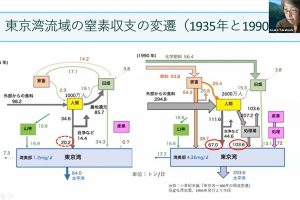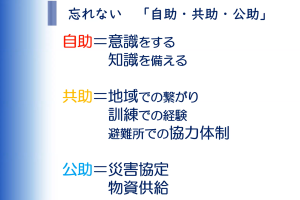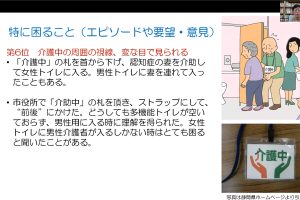Date: 17 November 2022 (Thu) 18:00-20:00 JST
Presenter:
Associate Professor & Ms. Yachiyo Murakami, Department of Early Childhood Education and Childcare, Tokiwa Junior College, Principal Actware Research Institute, Japan Toilet Association Steering Committee member.
Organizer:
Yoshihiko Kawauchi, Ph.D., Japan Toilet Association steering committee member, Former professor of Toyo University.
【Self-introduction】
(Murakami) I am a toilet planning coordinator rather than a designer. I have been participating in the toilet circumstance improvement at “O nursery school” in Osaka around year of 2005. I realized that the toilet improvement would greatly effective to the childcare at that time, and them I became involved in the toilets for the infants.
[Facts about the nursery school toilet planning]
I have been involved in the toilets of more than ten nursery schools. There are ten different designs of the toilets when there are ten nursery schools.
- Age to start childcare:
The mothers are allowed to take 8 weeks of the postnatal leave according to the Labour Standards Act, then the daycare centres start to nurse babies from 57 days after the birth.
- Classes and age of children
There are several classes for 0-year-olds to 5-year-olds in the nursery school. However different nurseries run different class systems. The children aged 57 days to 11 months are enrolled in the 0-year-old class as of April 1st. The 1-year-old class is from 1 year old to 1 year 11 months old, and the 2-year-old class is from 2 years old to 2 years 11 months old. A child who entered the nursery school at 57 days old in April will be 1 year and 2 months old in March of the following year that is the end of the Japanese fiscal year. A child who entered at 11 months old will be 1 year and 11 months old then. This means almost 2-year-old children are in the 0-year-old class at the end of the fiscal year. Similarly, there are children close to 3 years old in the 1-year-old class, and there are children close to 4 years old in the 2-year-old class in March of the following year.
Note: Japanese fiscal year is from April to March next year.
- A guideline for child growth
The babies will be able to stabilize their neck in about 3 months after the birth. They will be able to roll over in about 5 or 6 months and sit unaided at 6 to 7 months after the birth. Then they can stand up, crawl, and walk. There are considerable differences in the method of excretion support among the nursery schools. Therefore, it is difficult to tell simply that the toilet manners for the 0-year-old class should be. The child can sit on the potty and defecate so long as the child can sit without support by anybody. This does not mean that a child can controls excretion, it can be excreted in the potty when the timing comes. Thinking about just sitting on a potty, the babies can do at about 6 months old.
It is said that children will be able to tell that they want to excrete between the ages of 2 and 3 referring to the growth process of the children. It is true that the children start to speak words to tell at these ages. The age of a child beginning to use a potty or a toilet depends on how the nursery school regards the excretion process. There are some daycare centres that do not use the toilet or potty at all in the 0-year-old class, and directly start using the toilet when they proceed to the 1-year-old class. The support method varies from school to school. The 3 to 6 years children can go to the toilet by themselves to defecate, flush, and return without any support.
- Number of times of the excretion
The infants excrete quite many times. The babies urinate at a reflex of some kind of stimulus. Moreover, their bladder size is smaller to hold.
- Number of the diaper changes
The diapers were changed 4 to 7 times a day in the 0-year-old class at the nursery school in the 2015 survey. The number decreases at the 1-year-old class, but there are still 3 to 5 times changing. These numbers must be decreasing now owing to the improved quality of the disposable diapers.
- The Child Welfare Law in Japan, Minimum Standards for Child Welfare nurseries
This Law stipulates toilets in nursery schools according to the minimum standards for the child welfare facilities. This also stipulates that toilets must be installed, but it is not obligatory to install toilets in the 0-year-old class. The nursery room has a fixed area required for each child. The area of the toilet tends to be gradually reduced in some nursery schools where the overall area is small and limited. The toilet is a very important place in childcare because the number of diaper changes is quite often in the nursery school. It is necessary to place the toilet at the most accessible location.
- The staff placement standards
The number of nursery staffs is stipulated in the placement standards. One nursery staff is supposed to take care of three infants under the age of 0. Many nurseries must keep more staff than this. However, it is difficult to assign extra staff in a small-scale nursery school because of the staff limitation, and it is quite a hectic time for limited number of the staff when changing diapers.
- The Childcare Policy/Method
It is necessary to proceed the design with confirming the nursery school’s childcare policy, but this is quite difficult. When renovation, it is possible to have a meeting with the staff who are practically using it. On the other hand, there are often little opportunities to hear the request of how to be done in the case of new construction. “Child-centred” is now common keyword in the childcare industries. This means that the children themselves shall behave independently and play. I believe that the childcare shall be provided the circumstances to facilitate such a behaviour following to this concept.
A photo of the toilet before the renovation at “O” Nursery School where is my first renovation work

Some children in the 1-year-old class had their fingers caught in the sliding door or could not open it, depending on their age. Someone often leaked urine while changing into the slippers of the toilet. Small children take off all their underwear and trousers in the nursery room before going to the toilet. The toilet floor may be wet and their clothes get wet, if they take off their clothes in the toilet. The nursery staffs usually take groups of about five children together to the toilet at a time, even though some children wanted to urinate and others didn’t.
It must be more generally efficient to design the plumbing equipment together, although a filth drain and laundry area are installed together in the toilet in some cases. However, a toilet becomes unable to be used alone, and a nursery staff must follow because it is dangerous if the child may grab it. When the child has finished using the potty, leave it in the toilet because it cannot be left in the nursery room. The washed potty is also dried in the toilet. Consequently, toilets are often full of things of problematic for the children to grab.
Some children sit reversely at the toilet bowl and hold onto the flush valve behind the bowl to relieve themselves. There are often the cases that their hand may slip unintentionally and hits the face with the flash bulb hard. Then the flush bulb also becomes dangerous in such a case. The younger children often tend to sit on the toilet bowl facing against the wall, and it is a nice idea to place the second toilet paper on the back wall as well.
The nursery staff will take the children to the toilet together if mind to let a child to go to the toilet alone. The children are forced lined up in front of the toilet bowls, since the number of the bowls is limited. A conflict may begin among the children while standing on the queue. The nursery staff urges the children to go to the toilet while adjusting the matter. Such toilet time is a quite common view in many nursery schools.
This picture is the scene taken from the nursery room

A young child sits on a potty to relieve oneself at the outside of the toilet, while a nursery staff changes diapers nearby. The child was in the toilet and now is back and putting on the shorts and trousers by oneself. The children with various growth stages are mixed in a class and nursery staffs must take care of various children states at a time. The way they use from diapers to potties to toilets within a year as the children growing. There are many buckets in the toilets of the nursery schools. Many dirty things are putting in it, also the wet swimsuits in the summer season. There are hiding dangerous factors when a child goes to there alone.
[A toilet is a part of the nursery room]
A proposal of toilets for 1- and 2-year-old classes at “O” Nursery School
At first, I think it would be better to think of the toilet as part of the nursery room. The excretion, breastfeeding, and meal times are essential times for the close communication between the child and nursery staff. This deepens the relationship of trust of the child and the nursery staff. Rushing a lot of children to a toilet, finishing it quickly and leaving will not be a good period to communicate steadily. I think this may affect a big impact on children’s growth. My work began when I wondered if it would be possible to plan a toilet with an interior that is like a nursery room, such as comfort, relaxation, and peace of the mind for them.
There were concerns about whether it could be used hygienically and about odors during the discussions with nursery staffs. The hygiene is of course important issue in nursery school toilets, but if this is prioritized, the toilets must be unattractive place. I worked on the toilet plan for “O” nursery school as I wished to watch over the growth of children while ensuring hygiene.


The toilet floor was made of the same material as the nursery room and continued into the toilet in order to remove the barrier for the children. There is a door between the nursery room and the toilet, but it usually leaves open when using. The wall of the toilet is lowered and gaps by the louver are set on the wall board. This helps the toilet can be easily seen from the nursery room. The nursery room can be conversely seen from the toilet. Being able to see what’s going on in the nursery room from a child sitting on the toilet gives the child feel a much sense of security.
A potty space was provided next to the toilet bowl for the children whose toilet seat was too large size to sit on. A handrail was attached to the back wall of the toilet or a temporary handrail was placed in front of the toilet so that the child could sit on the toilet by themselves. Some children sat on the toilet bowl for an exceptionally long time in a circumstance where children could go to the toilet freely. Allowing children to go to the toilet at their own time is important, as they are gradually experiencing the time to take for the excrement and its physical experience.
It must be difficult for the nursery staff to keep up with the child during that time if the child sits on the toilet for a long time. It will be necessary for the nursery staff to be able to check on the condition of the child even when they are away. The child independence in the excretion is nurtured by allowing children to excrete with the peaceful mind. It is also necessary to create a storage space so that the inside of the toilet is not cluttered. The shower pans and the washing machines for the filth and buttocks are often designed to locate within the toilet space. This makes complicated the situation, and each function should be divided into separate spaces in the nursery school to solve. It is possible to ensure safety and increase the comfort of the toilet space same as the living room by setting in a separate place from the toilet.
The toilet was separated from the nursery room by a wall before the renovation, and the children in each class had to open the sliding door and enter the toilet. The toilet is open to the nursery room after the renovation, so that the children in all classes can go without opening the door.
The usage of the toilet is completely different with their ages even in the same 1-year-old class. Some children who used a potty before the renovation can now sit on the toilet with the handrail. Some children sit facing the back wall of the toilet bowl, while others sit with their back facing the back wall of the toilet bowl depending on the age of the month. The Children themselves will decide which direction to sit in according to their own physical growth and use it in a way that is easy for them to do. Therefore, it is necessary to prepare a circumstance where the children can make their own choices. The toilet paper holders are also attached to the three directions; front, side and back, making it easy to use no matter which direction the child sits. In this way, trying out methods on their own and making decisions on their own lead to the children’s lives proactively.
The children were lined up in front of the toilet bowl at the old toilet before the renovation, but the children who are in a hurry can sit on the toilet seat by themselves without help after the renovation, and children who are not in a hurry can talk each other while waiting. The children can wait and offer the toilet to the friend who are in a hurry. The children will talk and use the toilet on their own without instructions from the nursery staff in such a circumstance where the staff can watch over children with peaceful mind. The start of a child sit on the toilet seat by oneself will be about 5 to 6 months earlier in the 1-year-old class after the renovation. In other words, it can be said that the growth of a child’s excretion habit changes depending on the provided circumstance.
A proposal for 1- and 2-year-old class toilet in S Nursery School

An example of a toilet made in “S” Ward in Tokyo
There is a local rule in “S” ward that the toilet and nursery room must be separated by a wall, then widened the toilet so that diapers can be changed inside the toilet room in the 1-year-old class. It is important for the nursey staffs to hold positions in the infant class that they can see the child sitting on the potty or toilet bowl during they are changing diapers of the other child. Therefore, I tried to plan so that the space for changing diapers, the potty and toilet bowl was adjacent to each other especially when designing a toilet for a 0-year-old child.
A proposal for 0-year-old class toilet in O nursery school

A toilet was built in the nursery room for the 0-year-old class at this nursery school. The toilet bowls are normally hidden with the covers, and they appear when the covers are removed. The nursery staffs can see the children sitting on the toilet bowl when they are changing diapers beside the toilet bowl.
A proposal of a class toilet for 3- to 5-year-olds in “T” nursery school

We could get freedom in a degree to design when it comes to classes for children aged 3 and over. The toilet was placed in the middle of the play room in this nursery school. The children could go to the toilet without holding back even during playing. They would play while spinning around the toilet. I wish to break the unreasonable common sense that toilet is dirty space. The children started to concentrate on playing after the age of 3 and they could easily go to the toilet any time. My idea was that to make a toilet among the space of their playing ground.
A toilet proposal for 3-5 year old class in O nursery school

There was also a case where toilet cubicles were scattered in a nursery room. This came from the idea of placing the toilet within the nursery room. Scattering the toilet cubicles in the nursery room created a lot of rugged corners which became the play corners or picture book corners to be charactered as a different space.
[What is a children-centred “toilet” and “excretion?” ]
The children-centred toilet defecation means that they can go when wish, decide when to go, and do it at their own timing. The children can naturally choose their own way. It is good to create a circumstance where they can think by themselves and excrete freely to sit backwards or forwards according to their physical abilities of sitting or holding it.
It is important to have the adults around child to care and notice when the child is excreting regarding the excretion circumstance of the 0-year-old class in addition to the physical environment ingenuity. The disposable diapers are very convenient however it is difficult for nursery staffs to notice when their child is urinating when wearing.
[Planning points for the infant toilets]
- The detailed discussion with the nursery staff is essential
It is important to have a detailed discussion with the nursery staffs when planning toilets for a nursery school. However, this is not an easy way. The nursery staffs are often obsessed to the conventional idea of the toilets as an isolated, dirty, and smelly place. I think it is quite difficult to covert those prejudices only by the nursery staffs themselves. Therefore, the designers must somewhat understand of the nursery circumstance, and then propose a unbiased new idea.
- Arrangement of moving lines
Separate the walking lines for the children and nursery staffs. Do not leave items unattended. Do not bring anything unrelated to “children’s excretion” into the toilet.
- Open plan
There are things either to be possible or impossible be done according to the local government regulations. However, an open plan will be easier for the child to go to the toilet alone, and the nursery staff to make eye contact. It will be easier for the child to go to the toilet alone with feeling safe.
- A comfortable space as like a living room
It is also a good idea to use the same flooring and wall materials both for the toilet and for the nursery room in pursuing to the comfort of a living room. The recent materials become gradually better requiring with less maintenance.
- Ensuring hygiene
The local municipalities require to ensure the toilet sanitation. However, the toilet will be dull place if only sanitation is pursued. I think it would be necessary to consider thoroughly about the ease of maintenance and cleaning.
[After children start going to the toilet by themselves …]
The nursery staff can supervise whole surrounding area even when the staff watch from some distance away from the child. The nursery staff will no longer command by the words such as “Do it quickly” or “Don’t do it”, if the children can go to the toilet by themselves, instead the nursery staff will feel more relieved. On the contrary, the number of positive words increased about the excretion, such as “You had a good poop” or “You felt good mood.” Their interaction time with the children must increase. It becomes more sensitive to their facial expressions and gestures, and will be able to more treat each child with care. I think that the relationships of trust with the parents and nursery staffs are quite effective for the growth of children.
The nursery staffs will work less to do when there is a situation where children can do what they want by themselves. The toilet training will not be necessary when there is a preparation of the circumstance for the children to go to the toilet by themselves. The start of child self-excretion is about half a year to a year earlier depending on the circumstance. I feel regret for the child who is not able to make use of it even though the child is ready to do physically. If the designers understand the fact that the children will already be able to excrete by themselves, I think that this method of circumstantial proposal can be altered.
【Q&A】
[Q1: Ho] Does the child unconcern about excreting among the many children surrounded in the photo? [A1: Murakami] The cubicles in the nursery school where I was involved are set up in the toilets used by children over the age of three. There were cubicle doors or sometimes not. However, it differs depending on the nursery school policy since the feeling shame is a social manner.
The toilet for 5-year-olds was initially without partitions at one nursery school, and the toilet bowl and the urinal were placed side by side. However, each toilet bowl was surrounded by the cubicles and a door was added after the nursery school renovation. Then interestingly, the boys and girls who had been once talking happily while doing their toilets became embarrassed to each other. This feeling quickly triggered by the circumstances. Sometimes I was asked if the child used a toilet without a door at a nursery school, the children won’t feel embarrassed when they go to elementary school? I would answer that such will not be occurred. They start to feel embarrassed to leave the door open to use after the children enroll the elementary school and close the toilet door.
A child who moved from a nursery school with a toilet door to the other one without a door may feel embarrassed. A child often uses it naturally in a circumstance as an initial case. It is very important factor that children see each other in the 0-year-old and the 1-year-old class at the toilet. It is common for children to be interested in seeing other children’s excretion and to imitate the behaviour. A child who had never sat on a potty observes the other child sitting on it and imitates how to do it. Some local governments allege that children should not be seen due to the privacy concerns, but I think that it should be considered about the child growing process and other issues comprehensively.
[Q2: Ho] The number of nursery school children with ADHD (Attention Deficit Hyperactivity Disorder) is increasing
Are there any points to keep in mind, including toilet education?
[A2: Murakami] I think there are quite a few children who are diagnosed with a developmental disorder (Neurodevelopmental Disorder) when they grow up at the age of 4 or 5. It is also increasing in the nursery schools. The children with developmental disorders are also said to improve their symptoms if they reform their excretion behaviours. A toilet circumstance whenever makes it easy to go is good for any child. It is easier for the children to get used to excretion when they are small. I think it is not good to delay appropriate excretion support simply because of a developmental disorder. The fact that the circumstance guaranteed to excrete and cleanse is a good influence on the growth of any child.[Q3: Kawauchi] Does it mean that it is important to ensure a circumstance where the child can relax with a feeling of security? [A3: Murakami] That’s quite right. The infants can easily understand about the physical sensations such as the excretion. Some nursery staff said it was easier to communicate with the infants when they were praised after the well excretion compared to praising them for doing something the other actions. Some nursery staffs pointed that it must be easy for them to recognize the reason why they are being praised.
[Q4: Na] Is there any guideline for the number of the toilet bowls and urinals in nursery schools? [A4: Murakami] “S” ward once requested that one toilet bowl was needed for every five children. I personally think 1 in 5 children must be overwhelming.
[Q5: Kawauchi] At what age do children begin to use urinals? [A:5: Murakami] It’s been set up or not in the 2-year-old class at the nursery schools where I involved. Some local governments do not have such standards for the number of toilet bowls. It normally followed based on the number of the former toilets at the renovation.
[Q6: Kawauchi] You told that the small children excrete a lot and spend long time sitting on the toilet bowl. Isn’t it necessary to increase the number of toilet bowls for the small children? [A6: Murakami] I think it is realistic to prepare some potties for 0-year-old class and 1-year-old class. I would like to do more research on the circumstances where the potties are placed in the future.
[Q7 Ka] I would like to ask about the requests of the toilet equipment for the infants. [A7: Murakami] It will be better to hide the toilet flush valve for the safety of the small children, but there is no device to cover it. Also, it would be easier by something a tool to dispose of the potty waste and clean it. I think a potty is still necessary for some children who can sit on the potty but too young to set on the toilet bowl seat. The potty can be brought anywhere, but I think it would be convenient to have something like a compact sink for the filth in the room.
[Q8: Kawauchi] The problem of banging the child head on the flush valve is caused by grabbing the flush valve as there is no handrail equipped. Wouldn’t it be solved if there was a handrail nearer than the flush valve? [A8: Murakami] I think that is one of the solutions. The children will grab everywhere. For instance, grabbing the toilet seat, the flush valve, clinging to the tank, while trying to sit on the toilet bowl. The handrail attached to the wall next to the toilet bowl can be used by the children in the 2-year-old class and above. Conversely, children in the 2-year-old class and above can easily move without handrails. It is still unstable in the 0-year-old class and the 1-year-old class, if there is no handrail directly behind or in front of the toilet bowl.
[Q9: Kawauchi] How does the nursery school staffs recognize the importance of the toilet circumstances? [A9: Murakami] The nursery staffs are making much effort to help their children go to the toilet; therefore, they fully understand the importance of the toilet circumstance. However, nursery staffs request through experience, such as to increase the number of toilets, or the height of washing which is too high. It is difficult for them to come up with the ideas that changing the mind for the non-isolating toilets will contribute the child growth, because they are too much influenced by the current toilets. For example, I recommend that even 0-year-old classes need a toilet, but many nursery schools say that 0-year-old classes do not need it but they can use diapers, or that they will start using the toilet after they start 1-year-old classes.
[Q10: Kawauchi] I have watched the children in Southeast Asia and elsewhere are not wearing diapers by the pictures or videos. The parents raise their children without diapers in some countries. The children show signs of the excreting themselves early without the diapers, and the parents notice it quickly. I heard that Japan was similar situation before the World War 2. [A10: Murakami] I’m quite interested in that matter as well. The modern paper made diapers require fewer changes than the cloth ones. Both cloth diapers and paper diapers are used at the nursery school where I am currently involving. They try to reduce their consumption by a smaller number of changes since the paper diapers are brought by their parents. Taking care of the excretion is not only their routine work but also a timing of the communication with the child. The opportunities for communication will decrease if the less timing of the diaper changes. The children will be able to recognize that the excrement has been succeeded when they are called “Well done.” The disposable diapers are highly absorbent quality, and then it is difficult for nursery staffs to notice whether the child has excreted.
[C11: Wa] I am a director of Diaperless Childcare Research Institute. It is a common concept that child-centred care is important. But there is an issue that how to promote the child-centred excretion method. I’m really looking forward to the advanced child-centred care in the future, where many nursery schools will create toilets designed to encourage independent excretion from the age of zero.










